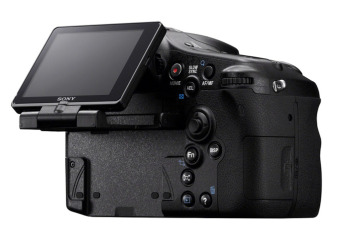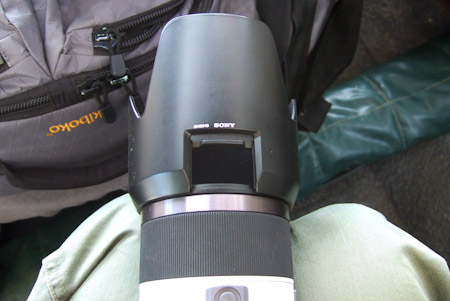
Now that I am back home and back into my daily routine, I have had the time to reflect back on my latest trip to Churchill, Canada. So where do I begin? Well, from the beginning.
A few years ago there was a conversation around a camp fire at some remote bush camp in Africa, and some of the people at that gathering mentioned that they wanted to go photograph polar bears. Well, there are a number of locations that one can visit, but the most productive, safe and predictable location for polar bears is arguably Churchill, Canada. Churchill is on the edge of Hudson Bay, and the location has a high congregation of bears in the area. I can get into a long discussion of actually why the bears are there, but this is for another time.

The tourist polar bear season last about 6 to 8 weeks each late fall / early winter, and most viewing is done from vehicles that are high off the ground. I presume the primary reason is for safety (duh), as polar bears can stand very tall on their hind legs. These vehicles, sometimes referred to as tundra buggies (and also a name of one of the two operators in the area) have both inside and outside locations from which to photograph from. On the inside, there are slide-down windows from which to put a bean bag and also your camera and lens combination. On the rear of the vehicle there is a platform. There is variability with these platforms, depending on which vehicle and which company you are working with. On our vehicle there was a grate where you could watch a bear go underneath you. Very cool!

The Pirate Ship. Aaaaaarrrrrr.
We stayed in the town of Churchill, and went out on the tundra vehicle during the daylight hours. And one evening we went out for a night ride with wine, cheese and dinner. Oh, and we also saw some wildlife. I must confess that this type of a trip is about as easy as it can get for wildlife photography. The company we used was Natural Habitat, and they did an excellent job at setting up the trip for me, taking phone calls, preparing people for the trip, getting us there, assigning an excellent naturalist / guide to take care of us and pretty much guaranteeing us a good time.

Churchill is a very well known area for polar bears, and for good reasons. I have nothing to compare our experience to, but we certainly had a wonderful time. We had a cast of characters for sure.

The Sony A900 camera goes to the arctic
On the equipment side, SONY graciously loaned my group a pair of A900 24mp full frame cameras, and three wonderful and fast lenses: the 24-70mm f/2.8 Zeiss, the 70-200mm f/2.8 G and the 300mm f/2.8 G. All three of these lenses are very well made, and have a very professional feel to them. I spent some time with the equipment, and I came away very impressed with many aspects. The A900 is a very well-built camera, and reminds me of my old F100 Nikon from the film days. The A900 fits in my hand like a glove and is rock solid. I love the angular design of the prism housing on the top.

The Sony A900 24.6mp digital SLR and 24-70mm f/2.8 Zeiss lens

The Sony A900 and 300mm f/2.8 G in action
The Sony Alpha A900 is a 24.6mp full frame digital SLR, and is one of only a few companies with a full frame sensor inside. Canon, Nikon, Contax (remember them?), Kodak (now discontinued) and now Sony have brought out full frame sensors, but Sony is the king of the hill with a whopping 24.6mp sensor. So only Sony, Nikon and Canon have full frame cameras, and Sony has the upper hand if file size is something you are after.

Sony A900, 300mm f/2.8 G, 1/1000 @ f/3.5, ISO 800
The file size is really nice, and I needed to shoot at ISO 800 for most of the trip, as the available light wasn't enough for a lower ISO value. The viewfinder on the A900 is gorgeous, and is likely the brightest I have seen to date on any camera. The A900, like many of the other Alpha line of cameras, has their SteadyShot anti shake technology inside, and from my limited time with the camera does have some benefit. How much? I am not sure, but it certainly cannot hurt.
In extremely cold environments battery life can be an issue. I had numerous batteries for the A900 on this trip, and even though we were working all day in mostly zero to 5 degrees F, I was unable to draw a battery down more than 50 percent.

Sony A900, 300mm f/2.8 G, 1/1250 @ f/5, ISO 800
There was a learning curve with the A900, just like with any platform change, and I was able to navigate through the menus fairly easily. The rear LCD is bright and detailed, and the menu items are fairly easy to understand what is meant.
All in all it was fun to shoot with the Sony equipment. I look forward to using more of their lenses, flashes and camera bodies. All of the Sony gear was transported to Churchill, Canada in a Gura Gear Kiboko bag, with tons of extra space for accessories and other items.
Here are some other images from the trip:

Shooting off the rear deck of the tundra vehicle. The polar bears get close!

An evening with some of the locals

Smile!
And a larger gallery of images can be found here:
Polar Bears of Churchill
 Wednesday, August 24, 2011 at 08:51AM
Wednesday, August 24, 2011 at 08:51AM 

 A77,
A77,  Sony in
Sony in  News,
News,  Photo Gear and Reviews
Photo Gear and Reviews 














